This blog explores the major AML and financial crime compliance trends shaping 2025. It highlights how predictive intelligence and perpetual KYC are transforming risk management, the challenges of decentralized finance and virtual economies, and the growing role of cognitive automation in compliance operations. Readers will gain practical insights into building a future-ready framework that is adaptive, resilient, and designed to stay ahead of evolving threats.
The landscape of Anti-Money Laundering (AML) and financial crime compliance is changing rapidly. As per UN Office, it is estimated that Financial crime costs global economy $2 trillion annually.
The tactics by threat actors are also evolving, leveraging emerging, such as Generative AI. Our previous blog discussed how access to Generative AI (GenAI) capabilities has enabled new-age threat actors and criminals to carry out various highly sophisticated fraud and financial crime schemes – and how Generative AI is transforming Financial Crim Compliance.
For compliance and risk professionals in banks and financial institutions, artificial intelligence and data-driven methods are no longer “nice to have”—they are the minimum expected. However, compliance leaders know the real challenge is not just keeping up with regulations, but keeping pace with adversaries who are moving faster and exploiting new digital frontiers.
This blog explores the AML trends that will shape 2025, from predictive intelligence and perpetual KYC to decentralized finance risks and the rise of cognitive automation. More importantly, it looks at what these changes mean for compliance professionals who must balance innovation, regulatory expectations, and the need for resilient frameworks in an increasingly complex environment.
Predictive Intelligence and the Evolution of Perpetual KYC
The concept of “Know Your Customer” (KYC) is undergoing its changing significantly. The existing static, point-in-time snapshot is being replaced by a dynamic, always-updated view. This is the era of Perpetual KYC (pKYC), which uses automation to continuously monitor customer risk profiles and triggers alerts when a deviation is detected, such as significant changes in transactions, spike in cross-border payments, or any updates/changes in the beneficial of ownership — in near real-time.
- Beyond Behavioral Analytics to Predictive Modeling
While current systems are adept at spotting deviations from a customer’s past behavior, the next frontier is predictive modeling. These systems won’t just flag a strange transaction; they will predict the likelihood of a customer engaging in high-risk activities in the future based on a confluence of factors. This includes analyzing not just their financial activity, but also their digital footprint, network connections, and even exposure to emerging geopolitical risks. - The Rise of Synthetic Data in Model Training
A major hurdle in training sophisticated AI models has been data privacy. The breakthrough solution gaining traction is the use of synthetic data. This AI-generated data mimics the statistical properties of real customer data without containing any personally identifiable information. Financial institutions can now train more robust and accurate models on vast datasets, stress-testing them against novel money laundering typologies without ever exposing sensitive customer information. - “Glass Box” AI and Explainability
Regulators are increasingly demanding that institutions not only have effective AI but can also explain its decisions. The push for “glass box” AI, or eXplainable AI (XAI), is a direct response. This means that when an AI flags a customer or transaction, it can provide a clear, auditable trail of the factors that led to that decision, satisfying regulatory scrutiny and empowering analysts with actionable intelligence.
AML Risks in Decentralized Finance, Virtual Economies, and Synthetic Identities
Financial crime is rapidly migrating to new, decentralized, and virtual frontiers. A robust AML strategy must extend beyond traditional banking rails.
- DeFi Exploitation and Sanctions Evasion
Decentralized Finance (DeFi) platforms, with their pseudonymous nature, are becoming a hotbed for money laundering. The challenge for compliance teams is to gain visibility into these ecosystems. Advanced solutions are now emerging that can trace the flow of funds across different blockchains and identify links to sanctioned entities or illicit activities. - The Metaverse and In-Game Economies
The burgeoning economies within virtual worlds and gaming platforms present a new and often unregulated frontier for financial crime. The conversion of fiat currency to in-game assets and back again can be a complex layering technique. Forward-thinking institutions are beginning to develop frameworks for assessing the AML risks associated with these emerging digital economies. - Combating Deepfake and Synthetic Identity Fraud
Generative AI is not just a tool for the good guys. The rise of deepfakes and synthetic identities represents a profound threat to customer onboarding and authentication. AML frameworks must now incorporate advanced biometric and liveness detection technologies that can distinguish between a real person and a sophisticated digital forgery.
Cognitive Automation and the Future of Compliance Operations
The final pillar is the move from simple automation to cognitive automation, where systems can not only perform tasks but also learn, reason, and make nuanced decisions.
- Generative AI as the Analyst’s “Co-Pilot”
Generative AI is set to revolutionize the role of the compliance analyst. Instead of just flagging alerts, these AI “co-pilots” will be able to:- Summarize complex case histories in seconds.
- Draft initial Suspicious Activity Reports (SARs) with a high degree of accuracy.
- Query vast unstructured datasets (like news articles, social media, and internal communications) to provide analysts with a holistic view of a case. This dramatically reduces investigation times and allows human expertise to be focused on the most critical and complex threats.
- Federated Learning for Collaborative Intelligence
One of the biggest challenges in fighting financial crime is the siloed nature of data within individual institutions. Federated learning offers a groundbreaking solution. This technology allows multiple institutions to collaboratively train a shared AI model without ever sharing their underlying sensitive data. The model learns from the data of all participating institutions, resulting in a much more powerful and accurate system for detecting widespread money laundering networks. - Agentic AI for Fraud Detection and Risk Mitigation
In 2023, the Federal Trade Commission (FTC) reported that the United States lost $10 billion to fraud, a 14% increase from 2022. Agentic AI provides banks and financial institutions with a new layer of defense. By analyzing transaction patterns within milliseconds, it can flag anomalies in real time, while simultaneously learning from historical fraud cases to anticipate emerging attack vectors. This combination of speed and adaptive intelligence makes it a critical tool for strengthening fraud prevention and overall risk mitigation. - Quantum Computing on the Horizon
While still in its early stages, the potential impact of quantum computing on financial crime cannot be ignored. Quantum computers will have the ability to break many of the encryption standards that currently protect financial data. Proactive institutions are already beginning to explore quantum-resistant cryptography to future-proof their systems against this emerging threat.
Conclusion
The AML and financial crime compliance landscape of 2025 is entering a decisive phase. Institutions can no longer rely on static frameworks or reactive responses. The imperative is clear. Compliance must evolve into a resilient, adaptive, and anticipatory architecture—capable not just of responding to threats, but of staying several steps ahead of them.
At Anaptyss, we partner with financial institutions to design and implement future-ready compliance frameworks that integrate advanced intelligence, automation, and adaptability. To explore how we can support your organization’s AML and financial crime compliance journey, connect with us at info@anaptyss.com.



